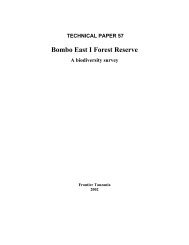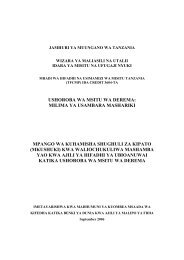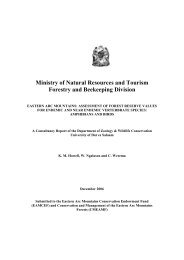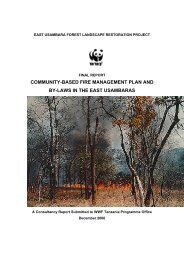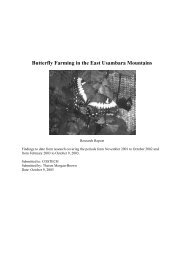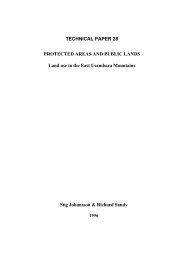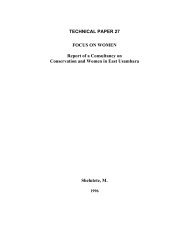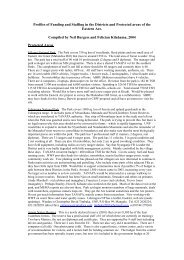Development of Sustainable Forest Use Strategies - Eastern Arc ...
Development of Sustainable Forest Use Strategies - Eastern Arc ...
Development of Sustainable Forest Use Strategies - Eastern Arc ...
You also want an ePaper? Increase the reach of your titles
YUMPU automatically turns print PDFs into web optimized ePapers that Google loves.
Pg 2:<br />
NSGRP adopts the “outcomes-approach” which counts on the contribution <strong>of</strong> all<br />
sectors towards specific outcomes on growth, improved quality <strong>of</strong> life, good<br />
governance and equity. The approach encourages inter-sector collaboration in<br />
devising more efficient ways <strong>of</strong> achieving these outcomes.<br />
The strategy seeks to:<br />
• Deepen ownership and inclusion in policy making processes by recognizing a<br />
need to make participation more institutionalized rather than a one-<strong>of</strong>f event.<br />
Public debate on growth, equity and governance issues will continue<br />
throughout the five years <strong>of</strong> the strategy along with arrangements for monitoring<br />
and evaluation;<br />
• Pay greater attention to mainstreaming cross-cutting issues – HIV, AIDS,<br />
gender, environment, employment, governance, children, youth, elderly,<br />
disabled and settlements; and<br />
• Address discriminatory laws, customs and practices that retard socio-economic<br />
development or negatively affect vulnerable social groups.<br />
The challenge is how to make sectors, in their unique ways and in collaborative<br />
settings, contribute to poverty reduction (URT, 2005).<br />
Pg 6:<br />
Constraints to rural growth are largely related to those related to the agricultural<br />
sector, broadly defined to include livestock and bee-keeping. The constraints<br />
include, [among others], low productivity <strong>of</strong> land, … infestations and outbreaks <strong>of</strong><br />
crop and animal pests and diseases, erosion <strong>of</strong> natural resource base and<br />
environmental degradation.<br />
Pgs 6-7:<br />
The natural resource sectors have contributed on average 5.7 percent <strong>of</strong> GDP, with<br />
fisheries showing the highest growth rate and substantial increases in export<br />
earnings. This does not include contributions <strong>of</strong> natural resources in providing<br />
energy and water and as the basis for tourism. However, the present use <strong>of</strong> natural<br />
resources is unsustainable (e.g. wanton tree-felling for charcoal production, bad<br />
farming methods that precipitate soil erosion and bad fishing methods). This<br />
precipitates poverty by eroding sources <strong>of</strong> livelihoods and destroying the<br />
environment. The challenge is for policies in respective sectors to enforce<br />
sustainable exploitation <strong>of</strong> natural resources. There has not been adequate<br />
encouragement <strong>of</strong> community participation in identifying, planning and implementing<br />
steps to protect natural resources and environment or effective enforcement <strong>of</strong><br />
existing regulations and by-laws.<br />
Pg 7:<br />
Tourism has developed rapidly since the mid-eighties. It is now an economically<br />
significant sector (12 percent GDP) that has grown at an average <strong>of</strong> 6.7 percent over<br />
the last four years. Tanzania is ranked as the 5 th top tourism income earner in Africa<br />
with annual receipts <strong>of</strong> US$739 million (WTO, 2001). However, apart from the<br />
indirect impact <strong>of</strong> increased revenue to government, growth in tourism has not led to<br />
16



